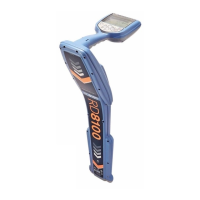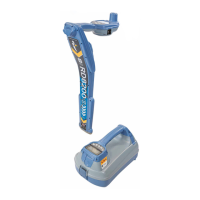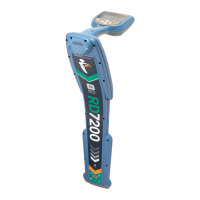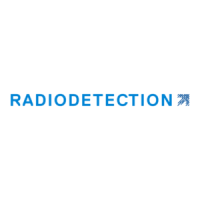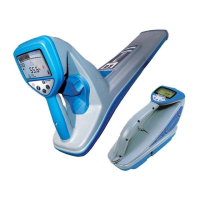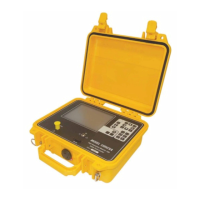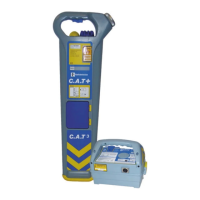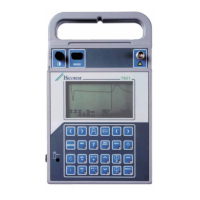ENGLISHDEUTSCHESpAñoLFRANÇAISITALIANoNEDERLANDS
19
Locating pipes and cables
Passive Frequencies
Passive frequency detection takes advantage of signals that are already present on
buried metallic conductors. The RD8000 supports four types of passive frequencies:
power, radio, CPS and CATV signals. You can detect these frequencies without the aid
of the transmitter.
Active Frequencies
Active frequencies are applied direct to the pipe or cable using the transmitter. The
transmitter can apply a signal using two methods: induction and direct connection.
Induction
The transmitter is placed on the ground over or near the survey area. You select the
appropriate frequency. The transmitter will then induce the signal indiscriminately to
any nearby metallic conductor. In induction mode, using higher frequencies is generally
recommended as they are induced easier onto nearby conductors.
Direct connection
In direct connection, you connect the transmitter directly to the pipe or cable you wish to
survey. The transmitter will then apply a discreet signal to the line, which you can locate
using the receiver. This method provides the best signal on an individual line and enables
the use of lower frequencies, which can be traced for longer distances.
Connecting the transmitter to a pipe or line requires the use of a direct connection lead
or clamp and a ground stake to complete the circuit.
WARNING! Direct connection to live wires is POTENTIALLY LETHAL. Direct
connections should be attempted by fully qualied personnel only!
Signal clamps
A signal clamp can apply a signal to a live line without breaking the connection. Signal
clamps are connected to the transmitter’s accessory socket. Radiodetection supplies
a range of signal clamps to suit most applications. Note that the RD8000 is fully
compatible with the RD4000 range of signal clamps.
Stethoscopes
At times, it may not be possible to use a clamp around a cable because of congestion
or inaccessibility. A stethoscope antenna should be used in place of a clamp to identify
cables.
Radiodetection supplies a range of stethoscopes to suit most applications. As with

